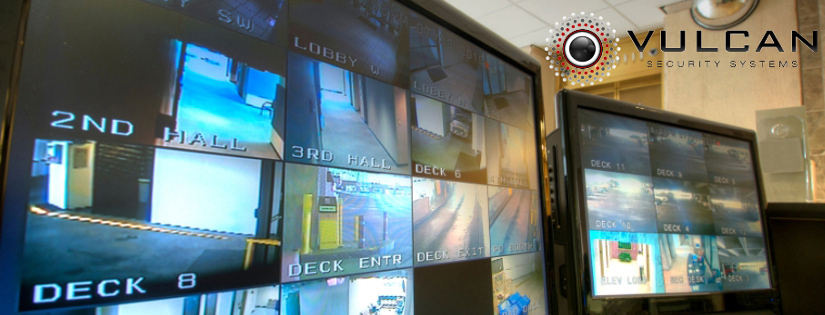The type of security cameras you can deploy requires consideration of your existing or desired network capabilities. In this post, we take a look at the main network options available.
A Primer on Network Technology Options for Video Security Systems
Closed or Open Networks
Computer networks, generally, are broadly classified as WANs or LANs: Wide Area Networks or Local Area Networks. Networked cameras for business surveillance purposes would typically be LANs.
Video camera networks can be configured to run through a closed network or an IP network. A closed network uses uses coaxial or ethernet cabling, but is not configured to be accessed remotely via the internet protocol technology.
The Original CCTV Security System was a Closed Network Built With Coaxial Cable
In the early days of analog video surveillance, the closed network of cameras was referred to as a CCTV network. That term is still used by some managers and executives when talking about a new generation video security network, even when the digital network is fully IP-based.
Most recently installed video security networks are build on IP-ready technology, even if the network itself is technically “closed” to internet connectivity. In that sense, CCTV can be a misleading term.
Coaxial-based networks are of an older generation and not recommended for new installations, unless a building is already wired with coaxial cable and the budget is limited. Why do we recommend moving away from coaxial cable networks today? You’ll have challenges with upgrading your system in coming years.
IP Networks
IP-networked video security refers to digital video transmitted through a network configured to use the internet protocol. IP-networked systems support remote monitoring through apps on your mobile device and/or through internet portals for desktop computer monitoring.
IP networks can be wired or wireless. This post focuses on wired IP video security. True wireless video security systems are available, but wireless security video suitable for enterprise-level applications will require a significantly higher capital investment. Full wireless video surveillance systems wire alternative energy sources to power the camera and transmitter (such as a solar charging station), greater hard drive storage capacity and access to wifi or 4G cellular networks. We’ll save the details of wireless video surveillance for another post.
A new enterprise-quality video security system would typically be designed to take advantage of the latest ethernet technology (fiber optics, Gigabit ethernet), rather than coaxial or even copper-based ethernet.
Higher resolution digital video cameras require more bandwidth on your network. This means the copper-based ethernet may not be capable of supporting a sophisticated HD security camera system. Higher-end cameras can be “dumbed down” to accommodate slower networks, but budgeting usually dictates that you select cameras to accommodate the network you have (or can afford to upgrade).
The geographic location of your business will determine the maximum speed of network transmissions on an IP-based network. Industrial parks and tech centers of cities and suburban office parks usually have faster connectivity than other areas. (More on that below).
Beyond the geographic considerations for the overall network capability, the speed of your internal LAN network will depend on on the age of your internal computer network, and whether you own the building where your business is located.
Many small businesses (including older generation manufacturers and warehouses) may be currently running a network based on copper ethernet. Mid-size businesses and enterprises are more likely to have internal fiber optic networks. These are generalities for Alabama, and there are often exceptions.
When we come in to do a needs assessment and consultation on a new or upgraded video security system we take a look at your current IT capabilities to help you define the scope of the system you need and that is consistent with your budget.
Depending on the location of your business, you may or may not have access to Gigabit internet, which has been quite limited in Alabama outside of certain industrial parks. Gigabit internet (also known as ultra highspeed internet) is now starting to spread in municipal areas of Alabama as of early 2017.
http://broadbandnow.com/Alabama
Retrofitting and Hybrid Networks
It is possible to have some older generation analog cameras on your digital video security network, but that topic is beyond the scope of this article. The topic of analog cameras on digital networks IS on our editorial calendar for a future article.
Free Needs Assessment
We offer free initial consultations and needs assessments to Alabama businesses. Contact us.
In our next post, we’ll take a look at some of the IP security camera options available for various applications.




